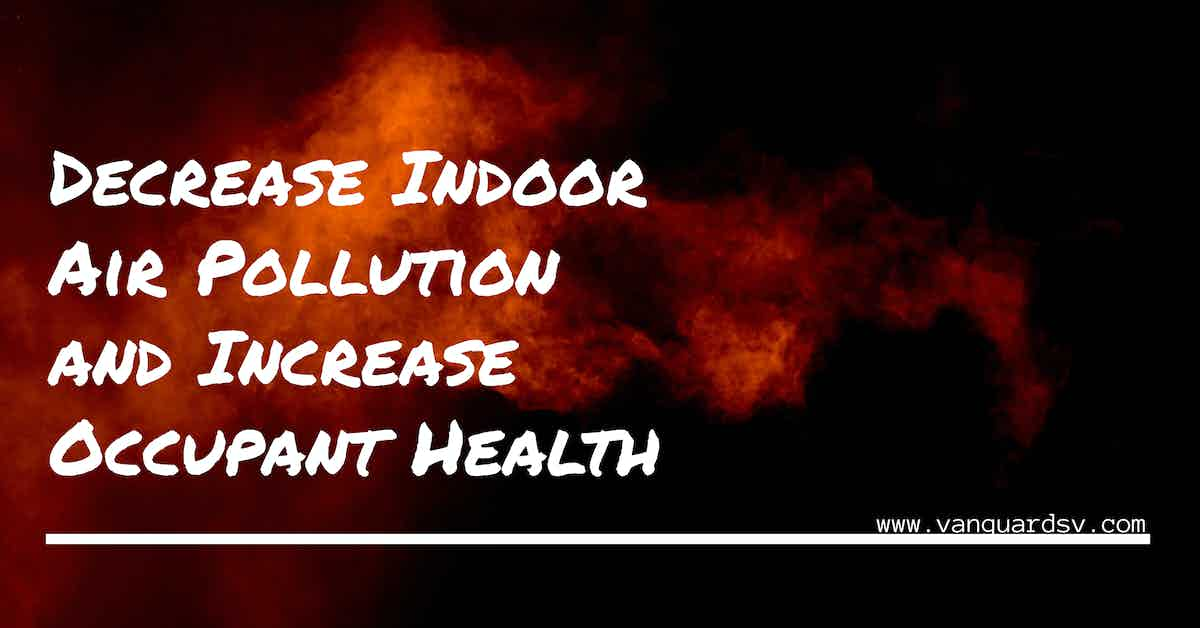October is the U.S.'s nationally recognized Healthy Lung Month--the perfect time to reflect on and assess the state and impact of indoor air quality in our public facilities, offices, and classrooms.

The Need for Clean Indoor Air
Indoor air quality (IAQ) dramatically impacts occupant health, wellness, and performance.
Unfortunately, over the years, the drive to improve building energy efficiency decreased mechanical and natural air flow through occupied spaces, often resulting in severe adverse health outcomes, performance issues, and social challenges--particularly among vulnerable demographics.
It has been estimated that people spend about 90% of their time in both private and public indoor environments, such as homes, gyms, schools, work places, transportation vehicles, etc.; thus, IAQ has a significant impact on health and quality of life in general.
For many people, the health risks from exposure to indoor air pollution may be greater than those related to outdoor pollution.
In particular, poor indoor air quality can be harmful to vulnerable groups such as children, young adults, the elderly, or those suffering chronic respiratory and/or cardiovascular diseases.
Symptoms of overexposure to low-quality indoor air commonly manifest in a phenomenon colloquially called sick building syndrome, which covers a wide range of health issues that typically present upon facility entry and resolve shortly after the occupant leaves the building.
The sick building syndrome (SBS) is used to describe a situation in which the occupants of a building experience acute health- or comfort-related effects that seem to be linked directly to the time spent in the building.
No specific illness or cause can be identified.
The complainants may be localized in a particular room or zone or may be widespread throughout the building.
Signs and symptoms of sick building syndrome include:
Headache, dizziness, nausea, eye, nose or throat irritation, dry cough, dry or itching skin, difficulty in concentration, fatigue, sensitivity to odours, hoarseness of voice, allergies, cold, flu-like symptoms, increased incidence of asthma attacks and personality changes.
The cause of the symptoms is not known.
It reduces work efficiency and increases absenteeism.
Most of the complainants report relief soon after leaving the building, although lingering effects of neurotoxins can occur.
According to the U.S. Centers for Disease Control and Prevention, many employers remain unaware of the connection between occupant health, performance, attendance, an organization's bottom line, and the national economy.
Many employers are unaware of the linkages between health and productivity.
While employers understand that investing in human capital improves the company bottom line, they are only beginning to understand the impact health has on worker productivity.
In fact, indirect costs of poor health including absenteeism, disability, or reduced work output may be several times higher than direct medical costs1
Productivity losses related to personal and family health problems cost U.S. employers $1,685 per employee per year, or $225.8 billion annually.
However, several studies have shown that moderate infrastructure and maintenance investments would significantly improve occupant health, performance, and output.
In a 2015 publication, researchers from Harvard University reported that;
[...] doubling the ventilation rate would cost less than $40 per person per year in all climate zones investigated, and would improve the performance of workers by 8%.
This was equated with a $6,500 increase in employee productivity per year.
They also updated the numbers presented in table 1, approximating the annual savings of $125 billion in 1993 dollars is roughly $186 billion in 2015 dollars.
They also estimated that even with conservative estimates, the increased productivity of an employee is more than 150 times higher than the energy costs associated with increasing ventilation.
Additional Methods for Improving Indoor Air Quality
Routine enhanced cleaning methods significantly improve indoor air quality and positively impact occupant health and wellbeing.
- Sweep, mop, dust, and vacuum daily with commercial-grade microfiber and HEPA-filtered vacuums.
- Switch to Safer Choice GreenGuard, EcoLogo, or Green Seal-certified disinfectants to reduce the release of volatile organic compounds into the air.
- Stop using perfumed fragrances to mask odors and invest in increased ventilation, improved cleaning methods, and janitorial services.
- Open doors and windows when and where practical, and;
- Install commercial-grade air cleaners in tightly controlled environments.
Takeaway
Major improvements to indoor air quality can be made with a relatively minute investment, especially when compared to the alternatives.
Enhanced cleaning with a sustainable focus is critical, but a trained custodial staff is mandatory.
Onboarding the requisite material resources and skilled labor to ensure high-level outcomes may prove cost-prohibitive for many organizations.
Outsourcing is a proven method for onboarding highly in-demand cleaning and disinfection services and experience for a fraction of the price of maintaining a similar service in-house.
If you would like more information regarding the effectiveness of high-performance infection prevention and control measures, or if you would like to schedule a free, no-obligation on-site assessment of your facility's custodial needs, contact us today for a free quote!
In Bakersfield, CA, call (661) 437-3253
In Fresno, CA, call (559) 206-1059
In Valencia, CA, or Santa Clarita, CA, call (661) 437-3253
In Palmdale, CA, or Lancaster, CA, call (661) 371-4756
![]()
![]()
![]()
![]()

